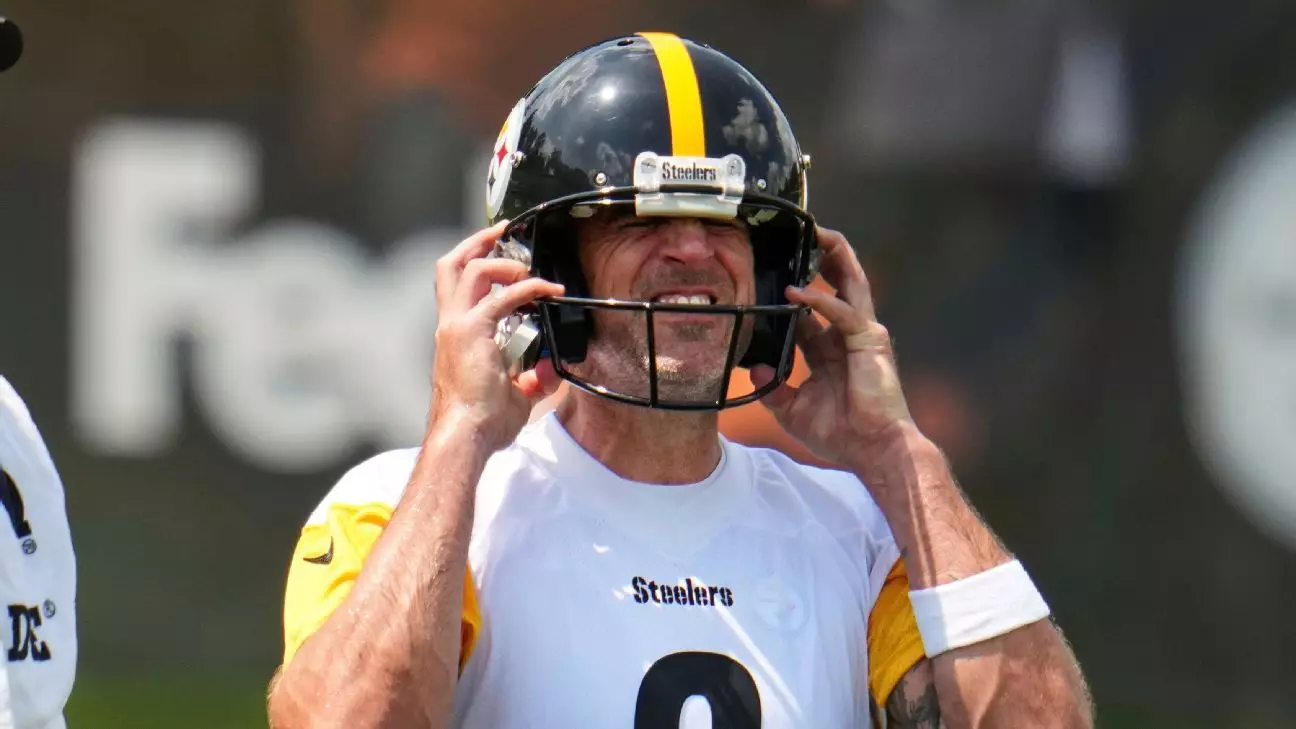In the high-stakes world of professional football, the tangible blend of tradition and evolving safety standards often creates complex challenges for seasoned athletes. For Aaron Rodgers, a player renowned for his precision and leadership, the recent helmet controversy exemplifies this tension. Rodgers, who has worn the same trusted helmet for over two decades, is now required to switch to a newer model due to regulatory changes that aim to enhance player safety. The new helmet, the Schutt Air XP Pro VTD II, is an upgrade mandated by safety protocols, but Rodgers’s candid dissatisfaction reveals a deeper issue: the difficulty athletes face in adapting to equipment changes that impact their comfort and performance.
Rodgers’s vocal frustrations shed light on the importance of athlete acceptance in the pursuit of safety innovations. While the new regulations are rooted in reducing concussion risks and other injuries, they often overlook the emotional and physical toll on players accustomed to specific gear. Rodgers’s comment about the helmet resembling “a damn spaceship” underscores a common resistance among veterans, who equate their equipment with their identity and comfort. This situation underscores a broader debate within the sport: how to balance technological safety advances with athlete preferences without compromising performance or morale.
The discomfort Rodgers expressed about the helmet isn’t merely superficial; it threatens to affect his focus and confidence during critical plays. His attempt to adapt highlights the ongoing struggle athletes face when forced to abandon familiar tools. It raises profound questions about the pace of safety reforms versus the human element — how much should athletes be expected to sacrifice familiarity in the name of progress? The NFL and its equipment manufacturers need to strike a delicate balance, ensuring innovation doesn’t alienate those who rely on gear that feels like an extension of their identity.
Injuries and Resilience: The Unpredictable Nature of the Game
While Rodgers navigates his helmet dilemma, another challenge has quietly unfolded: an injury to rookie quarterback Will Howard. What initially seemed like a minor injury rapidly became a more serious setback, revealing just how unpredictable football can be. During a routine practice drill, Howard suffered a freak finger injury that sidelined him indefinitely. His honesty about how the incident unfolded portrays the raw reality of football: even routine actions carry inherent risks.
Howard’s situation underscores a recurring theme in football — the thin line between routine and catastrophe. An accidental mishap, a simple exchange, can instantly alter a player’s trajectory. His description of the injury as “week-to-week” emphasizes the fragile window of recovery and the importance of mental resilience. Despite the frustration, Howard maintains an admirable outlook, recognizing that setbacks are a part of the game and that mental toughness is as critical as physical readiness.
The young quarterback’s response reveals a vital truth: resilience isn’t solely about physical healing, but also about mental preparation. His commitment to staying in shape, despite being sidelined, exemplifies a mindset that can turn adversity into an opportunity for growth. Howard’s injury also spotlights the importance of support systems—coaching staff, medical teams, and teammates—to foster recovery and keep spirits high. As he waits for the healing process to run its course, Howard’s experience encapsulates the unpredictability of football and the necessity for players to adapt quickly to unforeseen hurdles.
The Broader Implications for NFL Culture
Both Rodgers’s helmet frustrations and Howard’s injury reflect larger themes within the NFL: the constant push for progress intertwined with an unpredictable game environment. The league’s emphasis on safety continues to evolve, but the human element — emotion, tradition, and resilience — remains central to the sport’s identity. Players are not just athletes; they are individuals grappling with change, pain, and uncertainty.
Rodgers’s case highlights the importance of listening to veteran players’ feedback when introducing new safety measures. Their experience offers invaluable insights into how equipment impacts performance and mental well-being. Conversely, Howard’s injury reinforces the need for effective injury prevention strategies and enhanced training techniques that can minimize risks of freak accidents. The sport’s future depends on a nuanced approach: embracing technological advancements while respecting the complexities of human physiology and psychology.
This tension also prompts a reflection on leadership and culture within NFL teams. The ability to adapt, show resilience, and maintain professionalism in the face of adversity is what separates good teams from great ones. Rodgers’s and Howard’s experiences serve as microcosms of the ongoing battle between progress and perseverance. These stories remind us that football’s heart beats not just in its playbooks and helmets but in its capacity to foster resilience amid trials.
By critically examining these narratives, we recognize that the NFL’s evolution isn’t just about new rules or gear — it’s about nurturing the gritty, relentless spirit that defines the sport. Supporting players through their discomforts and injuries isn’t just a matter of best practice; it’s essential for preserving the integrity, excitement, and humanity of the game. This ongoing dialogue between safety and resilience underscores football’s enduring appeal: a sport where courage, adaptability, and grit are always at the forefront.

